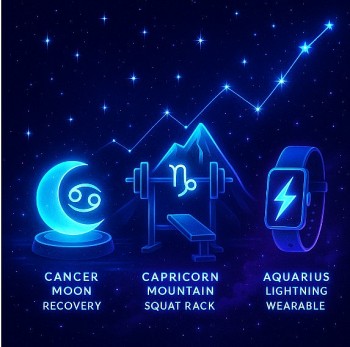Why Is Football Not Popular In America and Why Called Soccer?
 |
| Why Is "FOOTBALL" Not Popular In The US and Why Called "SOCCER" |
| Contents |
The world's most popular sport is unquestionably football. It is broadcast in every continent and nation in the world. The United States and England aren't typically foes in the World Cup. A different kind of rivalry, however, has existed off the field for more than a century: the debate over what to call the most popular sport in the world.
Americans refer to it as soccer. The majority of the rest of the world refers to it as football, including England, the country that gave rise to modern sports. However, most people are unaware that the word "soccer" was not coined in America. On the contrary, it was a recent import from England and was widely used there at the time.
So why isn't soccer more well-liked here? And why is football referred to as soccer?
Who Invented American Football?
Gridiron football, which shares a close resemblance with the two historic English sports of rugby and soccer (or association football), was created in universities in North America, primarily the United States, in the late 19th century. The first intercollegiate football game was played on November 6, 1869, in New Brunswick, New Jersey, between players from Princeton and Rutgers using rules that were modified from the London Football Association.
In the 1870s, a number of other prestigious Northeastern colleges began playing the sport, but Harvard University stayed away by sticking to a rugby-soccer hybrid known as the "Boston Game." Following a match against Montreal's McGill University in May 1874, Harvard's players came to the conclusion that McGill's rugby-style rules were superior to their own. The rugby style was adopted by Yale players and spectators (including Princeton students) when Yale and Harvard played their first intercollegiate game in 1875.
Walter Camp, referred to as the "Father of American Football," was the person most in charge of transforming this rugby-like game into the modern game of football. Camp played halfback and served as team captain, which was a position akin to head coach at the time, while a Yale undergraduate and medical student from 1876 to 1881. Even more significantly, he served as the IFA's (Intercollegiate Football Association) rules committee's chairman.
Camp helped the IFA introduce two significant changes to the young game: The initial "scrummage" or "scrum" was eliminated, and a team had to surrender the ball if it failed to advance down the field by a certain amount of yardage in a certain number of "downs." The 11-man team, the quarterback position, the line of scrimmage, offensive signal-calling, and the scoring system used in modern football were some of the additional innovations introduced by Camp. Camp served on the rules board, coached Yale to a 67-2 record from 1888 to 1892, and did all of this while serving as an executive at a watch manufacturing company.
The National Football League, later known as the American Professional Football Association, was established in Canton, Ohio, in 1920, greatly professionalizing the game. The NFL grew in size and popularity during the first half of the 20th century before combining with its rival, the American Football League, to become the titan it is today. The NFL is currently the biggest football league in the United States with 32 participating teams. And football is by far the most popular sport in the nation: A 2018 Gallup poll found that 37% of American adults identify football as their preferred spectator sport, with basketball coming in at 11% and baseball coming in at 9%.
Why is Soccer Not Popular in the US?
Americans are not the best in soccer
International competitions have not been particularly successful for the US Men's National Soccer Team. The USMNT actually missed this year's World Cup altogether! One of the reasons soccer is not as popular in America as it could be is because of this lack of success.
When the USMNT struggles, soccer's popularity suffers because Americans love to see their nation succeed. Additionally, Americans prefer to cheer for teams that have a chance of success, and soccer is regrettably not always perceived as having a chance of success when compared to other sports.
Soccer is not a good tool for marketing and business
Businesses in the United States aim to maximize their profits. There is no exception with the major TV networks in the US. Obviously, when they broadcast sporting events, advertising is their main source of revenue.
There are no commercial breaks during soccer matches. As a result, networks are unable to profit as much from advertising, which is one of the reasons why it is not very well-liked in America.
Furthermore, these networks don't air many games on TV or pay a premium to broadcast them live, so they don't want to invest time and money in promoting something that will only be watched by a small audience in the first place.
This lack of viewing options brings us to our following point: how will people become interested in soccer if they can't watch it on television? American soccer fans simply have no reason to get involved if they aren't being exposed to it constantly (via advertising).
Faking injuries
Soccer and American football are diametrically opposed in terms of roughness. Football is a more physically demanding sport than soccer. Americans may not like soccer as much as they do football for a variety of reasons, including the fact that it lacks the same physicality.
Players may occasionally fake injuries as a result of this lack of physicality in order to gain an advantage on the field. This is unfamiliar to American audiences, who find it unattractive. Americans respect football players for their toughness and ability to play through injury.
There is a fair amount of flopping (or diving) in soccer as well. To get a free kick or penalty, players will exaggerate contact or falls. Again, most American sports fans are unfamiliar with this, so it does not appeal to them.
In basketball and American football, serious fouls are not tolerated; in soccer, however, players frequently trip over themselves or collapse at the slightest touch! Soccer may not appeal to Americans as much as other sports do due to its lack of physicality; it simply does not hold the same allure for them.
The American culture clearly has a preference for excessively big things. Players’ height and weight
Americans are accustomed to big, dramatic events because the US is such a large nation. This could be one of the factors preventing Americans from becoming as passionate about soccer as people in other nations.
In all sports, the height and weight of the players is crucial. In contrast to Europe and other regions, America places a higher value on height and weight than on speed or agility. Traditionally, soccer players are smaller than those who play basketball or football, both in terms of height and weight. One of the reasons soccer is not well-liked in the United States may be due to this preference for larger individuals; it simply does not fit into the American sporting culture.
Other soccer-loving nations tend to value their athletes differently: Spain values technical skill over physicality (and it has worked out well for them), while Brazil adores dribbling skills with lots of flair! None of these qualities are particularly valued in the US; instead, taller athletes are preferred at most positions.
Soccer can be a slower, more strategic game than the big, explosive moments that Americans love. Additionally, there are fewer opportunities for people to watch soccer live or on TV because the sport is less well-liked in America. And lastly, compared to other sports that Americans enjoy watching, soccer games can last up to 90 minutes, which is a long time.
Americans can’t stand a tie
The possibility of a tie is one of soccer's biggest issues. Since there are no overtime periods in soccer, unlike football and basketball, if the score is tied at the end of regulation, both teams receive a point.
Americans get frustrated by this lack of closure because they are not used to it. Nearly every sport in America has a clear winner and loser, but soccer occasionally defies this rule.
Ties also make games less exciting to watch live or on television because we don't know the outcome until the very last second (or sometimes not at all). This unpredictability hurts television ratings and viewership figures.
Why do Americans call It Soccer, Not Football?
 |
| Photo: history |
While referring to the most popular sport in the world as "soccer" is typically seen as a sign of American ignorance, Britain is to blame for the fact that we don't refer to it as "football" like the rest of the world.
According to a recent paper by University of Michigan professor Stefan Szymanski, the word "soccer" was created in Britain and stopped being used there only about 30 years ago.
The term "association football" was used in Britain for more than 200 years before the term "soccer" was coined.
A number of British universities began playing their own versions of "football" in the early 1800s, each with its own set of rules. These games were grouped under various organizations with various names in order to standardize things across the nation.
A variation of the game you played with your hands evolved into "rugby football." A different variation became known as "association football" after the Football Association was established in 1863 to further the game's development, 15 years after the rules were developed at Cambridge.
"Rugby football" was abbreviated to "rugger". It changed from "association football" to "soccer."
The American people created their own version of the game they simply referred to as "football" in the early 1900s after these two sports gained popularity across the Atlantic.
What was known as "gridiron" in Britain became "football" in America, while "association football" became "soccer" there.
The interesting thing about this is that "soccer" was still commonly used in Britain for a significant portion of the 20th century. Szymanski discovered that "football" and "soccer" were "almost interchangeable" in Britain between 1960 and 1980.
Then, everything did, according to Szymanski:
Since 1980,'soccer' has become less frequently used in British publications, and when it is, it typically refers to an American context. This decline appears to be a response to the rising usage in the US, which appears to be connected to the NASL's peak around 1980.
The American connotations of the word "soccer" caused British people to stop using it.
So, if you're American, calling it "soccer" is not incorrect.
Is America the only place that calls football soccer?
Its foundation is linguistic etymologies. Others besides Americans do not refer to it as "football." not by any means. South Africa, a large portion of Southeast Asia, Japan, Korea, Oceania, and even Italy refer to it by a different name than "football."
How to increase US soccer engagement
Focus on the right people
Youth and Hispanic audiences are two demographics in the US that are already very interested in soccer.
Youth are more open to technology and have a more global perspective. Soccer appeals to them because of its widespread appeal and diverse fan base. It's important to engage and inspire young fans to support a team, and to make soccer an important part of youth culture. Soccer-related news, brands, and content should always be available and prominent in places where young people congregate, such as social media, music festivals, and pop-up experiences, to name a few.
Hispanics are projected to make up 144 million people in the US by 2050, or 30% of the country's total population. They bring their language, culture, and most importantly, their passion for soccer, with them. A combination of more prominent Spanish-language commentary and punditry for the big games and reasonably priced coverage of Latin American leagues and tournaments could help this audience feel more catered to.
Be distinctive and relevant
It can be challenging to break into the crowded sports market in the US because many of these activities are deeply ingrained in the national identity. Simply put, soccer must stand out from other sports and be unique. All sports are intense, dramatic, and emotionally charged, so soccer needs to concentrate on something different to stand out.
Young people are drawn to companies that a) have a mission and support causes they care about, and b) provide a seamless user experience using cutting-edge technology. The use of cutting-edge technology for playing and watching soccer as well as connecting soccer to a relevant cause are likely to increase soccer's relevance in the US today.
Create celebrities
Many soccer supporters in the US don't follow any teams or leagues. They follow specific players and will continue to do so regardless of the team they join. More could be done to take advantage of these as strong assets for the game, especially since the MLS currently features many well-known US athletes.
Focusing on a player, or a group of players, rather than their teams in advertising and sponsorship will generate buzz about these top athletes, which might be just enough to increase interest in soccer. In the coming years, players like Christian Pulisic or Weston McKennie might emerge as the faces of US soccer.
Capitalise on current soccer passion points
The Premier League (EPL), followed by the Champions League, is the most watched league in the US after the World Cup and Major League Soccer. Even though they are broadcast on national television, these events frequently pass without the casual fan being aware of or appreciating their significance. To capitalize on soccer fervor where it already exists, better marketing is needed for major non-World Cup events like the Champions League, English Premier League, and Copa America.
NYCFC is on the right track. The average fan now associates NYCFC with the interest and passion that there is for soccer in Manchester thanks to their affiliation with Man City, which also gives them access to a talent pool. This kind of franchise strategy involving partnerships with premier teams in Europe and South America should be taken into consideration by other US clubs, especially more recent ones.
The recent announcement that the US, Mexico, and Canada will co-host the 2026 World Cup presents a significant opportunity to create buzz in the years leading up to the event and promote the tournament as the pinnacle and pillar of the US soccer movement.
Make it easy and affordable
Our research supported the continued importance of perceived price and availability, despite the fact that it is not as significant as cultural shifts. Soccer-specific OTS streaming services are emerging, but fans believe they need multiple subscriptions to follow their preferred squads or players. If this perception were to change, more people might decide to give soccer a try for the first time.
Conclusion
Until more than a century later, the wordsSoccer and Football were both widely used in England. By the end of the 1980s, however, they started to gradually phase them out and switch to using the word Football to refer to football - only the feet were allowed (except for football). Goalkeepers are permitted to use their hands), and rugby is used to distinguish it from the American football-style football game.
In the US, rugby is known as American Football, or simply Football. The two most obvious differences between American Football and Rugby are that each team consists of 11 players who are all wearing hard protective equipment (chest armor, helmets, thigh covers, pillows, etc.). 15 players make up the rugby team, and none of them are wearing any protective gear.
Due to the word's association with association football, Americans and Canadians use the term "soccer" to refer to football.
 Top 10 States With The Highest Gas Prices In America Top 10 States With The Highest Gas Prices In America Take a look at these states with the highest gas prices in the U.S, considering if you are looking to travel here on your summer ... |
 Top 10 States With The Cheapest Gas Prices In America Top 10 States With The Cheapest Gas Prices In America With the gas prices soaring high across the United States, you can still fill your pump with a fair, rather cheap, amount of money in ... |
 Can Americans Legally Travel to Iran? Can Americans Legally Travel to Iran? With US-Iranian relations in flux and reports of shifting politics within Iran, it’s no wonder that Americans question whether they can or should travel to ... |
























